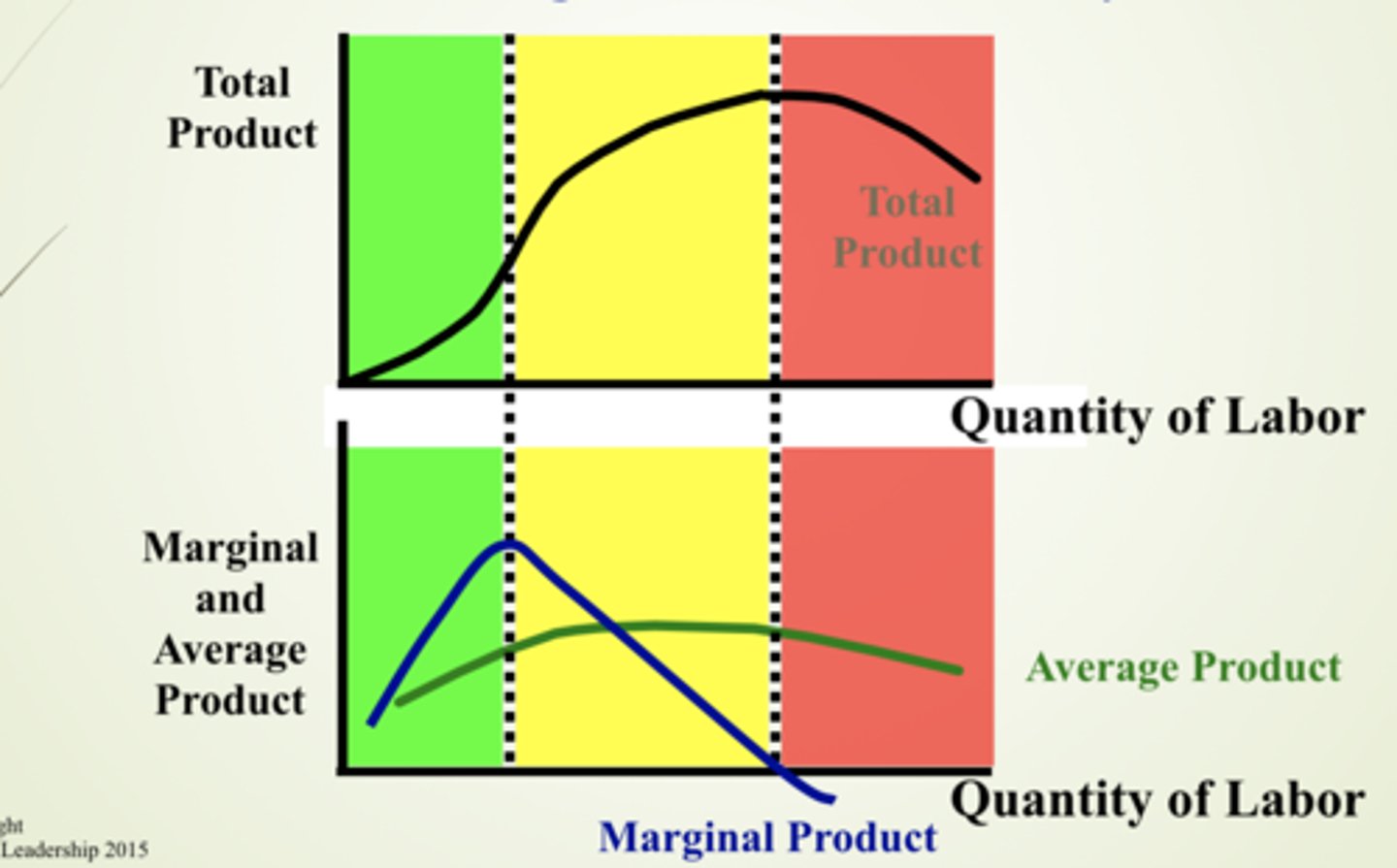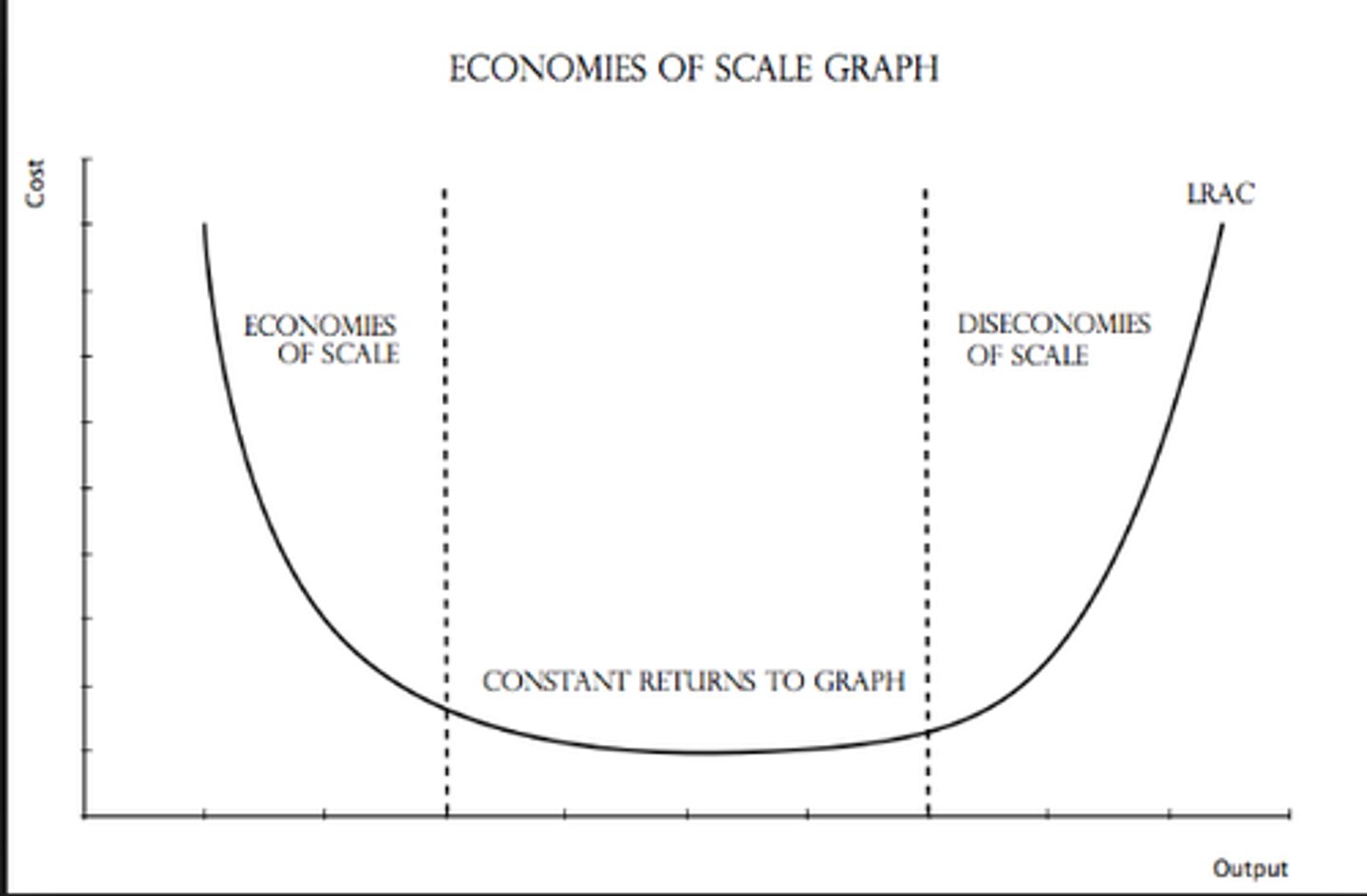unit 3 econ final review
1/46
Earn XP
Description and Tags
12th grade ap microeconomics
Name | Mastery | Learn | Test | Matching | Spaced |
|---|
No study sessions yet.
47 Terms
accountants
explicit costs only
economists
explicit costs and implicit costs
explicit costs
- payments paid by firms for using the resources of others
- out of pocket costs
- ex: rent, wages, materials, electricity bills
implicit costs
- opportunity costs that firms "pay" for using their own resources
- ex: time
production
converting inputs into outputs
inputs
- resources used to make outputs
- also called factors
total physical product (TP)
total output or quantity produced
marginal product (MP)
- additional output generated by additional inputs (workers)
- ΔTP/ Δinput
average product (AP)
- output per unit of input
- TP/ units of labor
law of diminishing marginal returns
- as resources (workers) are added to fixed resources (machinery), the additional output produced from each new worker will eventually fall
- short run concept bc of fixed resources
stages of returns
- increasing marginal returns
- decreasing/diminishing marginal returns
- negative marginal returns

increasing marginal returns
- MP rising
- TP increasing at an increasing rate
decreasing/diminishing marginal returns
- MP falling
- TP increasing at a decreasing rate
negative marginal returns
- MP is negative
- TP decreasing
accounting profit
total revenue - accounting costs
economic profit
total revenue - economic costs
short run
period in which at least one resource is fixed
long run
- all resources are variable
- no fixed resources
total costs
- total fixed costs (FC)
- total variable costs (VC)
- total costs (TC)
per unit costs
- average fixed costs (AFC)
- average variable costs (AVC)
- average total costs (ATC)
- marginal cost (MC)
fixed costs
- costs for fixed resources that don't change with the amount produced
- ex: rent, insurance, managers, salaries
average fixed costs
fixed costs/ quantity
variable costs
- costs for variable resources that do change as more/less is produced
- ex: raw materials, labor, electricity
average variable costs
variable costs/ quantity
total cost
sum of fixed and variable costs
average total cost
total costs/ quantity
marginal cost
- additional costs of an additional output
- U-shaped bc of diminishing marginal returns
marginal cost
Δtotal costs/ Δquantity
MP and MC
mirror images of each other

ATC
- lowest point at MC
- MC below average = pulls average down
- MC above average = pulls average up
fixed costs change
only AFC and ATC change
variable costs change
only MC, AVC, and ATC change
LRATC
made up of all the different short run ATC curves
economies of scale
LRATC falls as more output is produced

constant returns to scale
LRATC is as low as it can get

diseconomies of scale
LRATC increase as more output is produced

perfect competition
- many small firms
- identical products
- no barriers to entry
- no ads
- price takers
why perfect competitive firms are price takers
- no one will buy if firm charges above market price bc they will go to other firms
- no reason to price low bc consumers buy at market price
perfect competitive firm demand curve
perfectly elastic (price is the same at all quantities demanded)
short-run profit maximization
- firms should continue to produce until the additional revenue from each new output equals the additional cost
- MR = MC
shut down rule
- produce as long as price is above AVC
- shut down when price is below AVC to minimize losses
- if price is below AVC, firm is losing more money by producing than shutting down
profit maximizing rule
- loss minimizing rule
- applies to all market structures
- only applies if P is above AVC
- perf comp -> P = MC bc MR = P
perfectly competitive graph

long run perfect competition
- firms enter if there is profit
- firms leave if there is loss
- firms break even, no economic profit (normal profit)
- extremely efficient
long run perfectly competitive graph
- price = MC = minimum ATC
- normal profit
- no incentive to leave or enter industry

productive efficiency
P = minimum ATC
allocative efficiency
P = MC